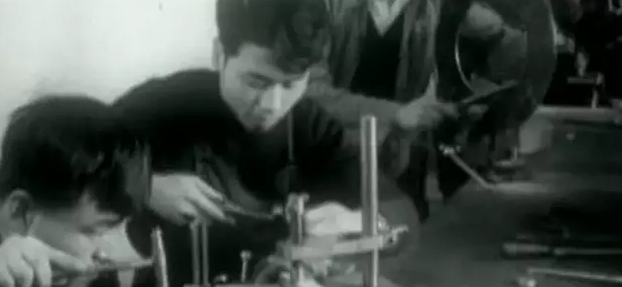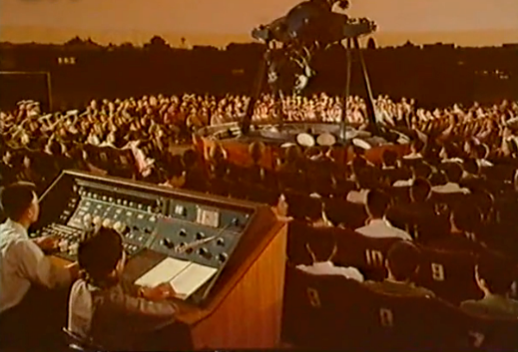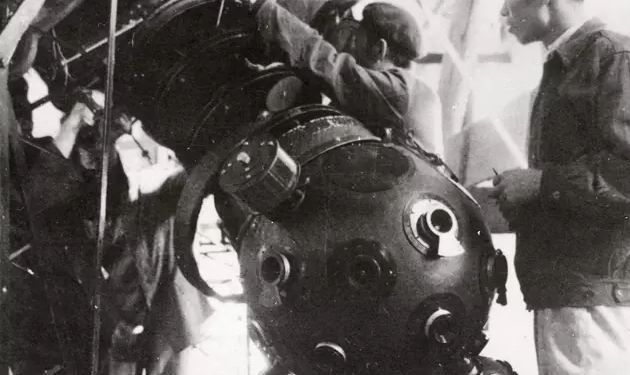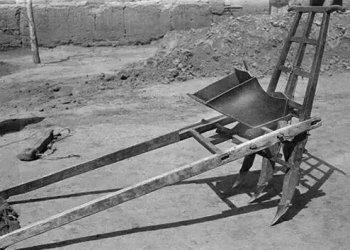From the successful development of the first large-scale celestial sphere prototype by the newly established People’s Republic of China in 1958, to the replacement of the German-made Zeiss planetarium projector by China’s domestically produced large-scale celestial sphere in the Beijing Planetarium in 1976, the journey represents a remarkable achievement in the country’s scientific and technological history.
The movements of the sun, moon, and stars, and the rotation of constellations are etched into the memories of generations of Chinese people by the “brilliant light” of Beihang University (formerly Beijing University of Aeronautics and Astronautics). This accomplishment vividly illustrates the path of independence and self-reliance followed by Chinese researchers, showcasing the spirit of innovation and inclusivity that has driven Beihang since its founding.
On July 1, 1958, Ma Zhiqing, the Party Secretary of the Instrumentation Department at Beijing Industrial Institute (now Beihang University), led a group of young faculty members, 8531 class graduates, and over a hundred students from lower grades to solemnly swear under the Party banner: “In three months, we will build a celestial sphere as a gift for the 9th anniversary of the founding of our nation!” For Wu Shaohao, who had just started his career two years earlier, this vow was an unforgettable and pivotal moment, as it symbolized the deep patriotism felt by the faculty and students of Beijing Industrial Institute.

In 1958, the fresh landscape of Chinese society deeply moved the entire nation, making “a gift for National Day” the most powerful expression of the school’s patriotic sentiment. At the same time, “self-reliance and rapid progress to reach the cutting edge” became the guiding motto of the school’s work. In this context, the faculty and students of the Instrumentation Department set their sights on one of the world’s most complex optical instruments at the time—the large celestial sphere. This would not only be a significant contribution to China’s scientific progress but would also symbolize the spirit of innovation that propelled the country forward.
The large celestial sphere integrates optical systems, mechanical structures, and electrical control, making it one of the most complex large optical instruments in the world. In the 1950s, only Germany had the capability to design and manufacture such devices. In 1957, the Beijing Planetarium was completed, marking China’s first large-scale planetarium, and it was also the first in Asia. The celestial sphere used in the planetarium was imported from Germany. For China at the time, the idea of building a celestial sphere in just three months seemed almost impossible. However, the teachers and students of Beijing Industrial Institute (now Beihang University) were determined to “compete with heaven itself.” “We in the four departments wanted to achieve the world’s cutting-edge technology in our field,” they said. Starting from basic knowledge of astronomy and the fundamental principles of celestial spheres, the faculty and students embarked on a monumental scientific endeavor and a large-scale academic learning journey.
The first thing the young team, led by Wu Shaohao, did was to eliminate their ignorance of astronomy. They visited the Beijing Planetarium to closely observe and study the celestial sphere, gaining an understanding of its structure and working principles. Upon returning to school, they analyzed and researched the device in detail. To complete their task as quickly as possible and present their work as a gift for the national holiday, they often worked late into the night, overcoming technological challenges. “We often didn’t sleep,” Wu Shaohao recalled. “When we held research meetings, four or five of us would stand and talk, and while standing, we would fall asleep.” Eventually, they moved their luggage into the workshop where the celestial sphere was being built. “When something came up, we’d get up and work for a while; when nothing was happening, we’d just sleep there,” Wu Shaohao added.

With the support of the Beijing Planetarium, the faculty and students of the Instrumentation Department worked tirelessly, day and night, from July 1958 to October 1958. In just three months, they successfully developed China’s first prototype of a large celestial sphere, which was demonstrated at the Beijing Planetarium, attracting widespread attention from various sectors of society. The Beijing Film Studio even came to the school to film the production and installation process of the celestial sphere, which was later made into a documentary and widely broadcasted.
The successful demonstration of the large celestial sphere caught the attention of its place of origin, the former German Democratic Republic (East Germany). They could hardly believe that China, with such limited technological capabilities at the time, was able to independently produce a celestial sphere in such a short period. The East German Embassy in China sent representatives to watch the demonstration, and they were full of admiration for the achievement of the faculty and students at Beijing Industrial Institute (now Beihang University). “After watching, they kept walking around the sphere, asking many questions,” Wu Shaohao recalled proudly.
Although the first prototype of the large celestial sphere in 1958 was still in its early stages of development and its performance did not meet practical application requirements, it represented an independent exploration and practical implementation of the entire technological system of the celestial sphere by China. It successfully filled a gap in this field and achieved a historic breakthrough—from nothing to something.

While the faculty and students at Beijing Industrial Institute had created another “first” for New China with remarkable determination, their journey of exploration had only just begun. The path to catching up with the world’s technological level was far from over, and many technical challenges remained to be solved before they could build a celestial sphere that truly met application demands.
In 1959, with the support of the school, the celestial sphere project was jointly undertaken by the Instrumentation Department and the school’s factory. They developed a plan for the second phase, which involved the production of three large celestial spheres. This marked the beginning of the development of the “three brothers” of celestial spheres in the 1960s.
After thoroughly analyzing and studying the technical documents and actual equipment imported from the former German Democratic Republic, the project team found areas for improvement in both the accuracy and effectiveness of the device. They boldly ventured into innovative territory, starting with the fundamental principles and creatively proposed a “solar system geocentric simulation model” for the celestial sphere’s operation. This model made the planetary movements in the solar system more closely aligned with the actual viewing habits, thus achieving higher precision. This innovation set the domestic celestial sphere apart from all others worldwide that adopted the “heliocentric” model, establishing a unique and independent path for China’s celestial sphere development.

From 1959 to 1965, after six years of dedicated efforts, the project team completed the third comprehensive improvement of the celestial sphere’s “solar system mechanism.” In the spring of 1965, Beijing Industrial Institute successfully developed a highly functional celestial sphere prototype, meeting the expected research goals.
In 1976, Beijing Industrial Institute successfully designed and manufactured a large celestial sphere with internationally leading standards, which was officially demonstrated at the Beijing Planetarium. This celestial sphere was also the first large celestial sphere in New China to be officially put into practical use.
“We carefully considered all aspects of the device. While it has creative elements, some of its performance indicators surpass those of foreign models,” said Wang Daxian during the evaluation meeting. The meeting concluded that the successful development of the domestic large celestial sphere filled a gap in this field within the country, placing China among the few nations capable of manufacturing large celestial spheres.
Subsequently, the large celestial sphere developed by Beijing Industrial Institute replaced the model from the former German Democratic Republic, and was officially installed at the Beijing Planetarium.
From 1976 to 2007, this large celestial sphere served continuously at the Beijing Planetarium for 31 years, receiving over 20 million visitors and becoming a collective memory for several generations. For over two decades, it tirelessly served its purpose. It is this unwavering quality and belief that inspired generations of Beihang University (formerly Beijing Industrial Institute) students and faculty to always serve the nation’s major strategic needs, target the world’s scientific frontiers, strive for excellence, selflessly dedicate themselves, and write brilliant chapters alongside the Party and the nation.











